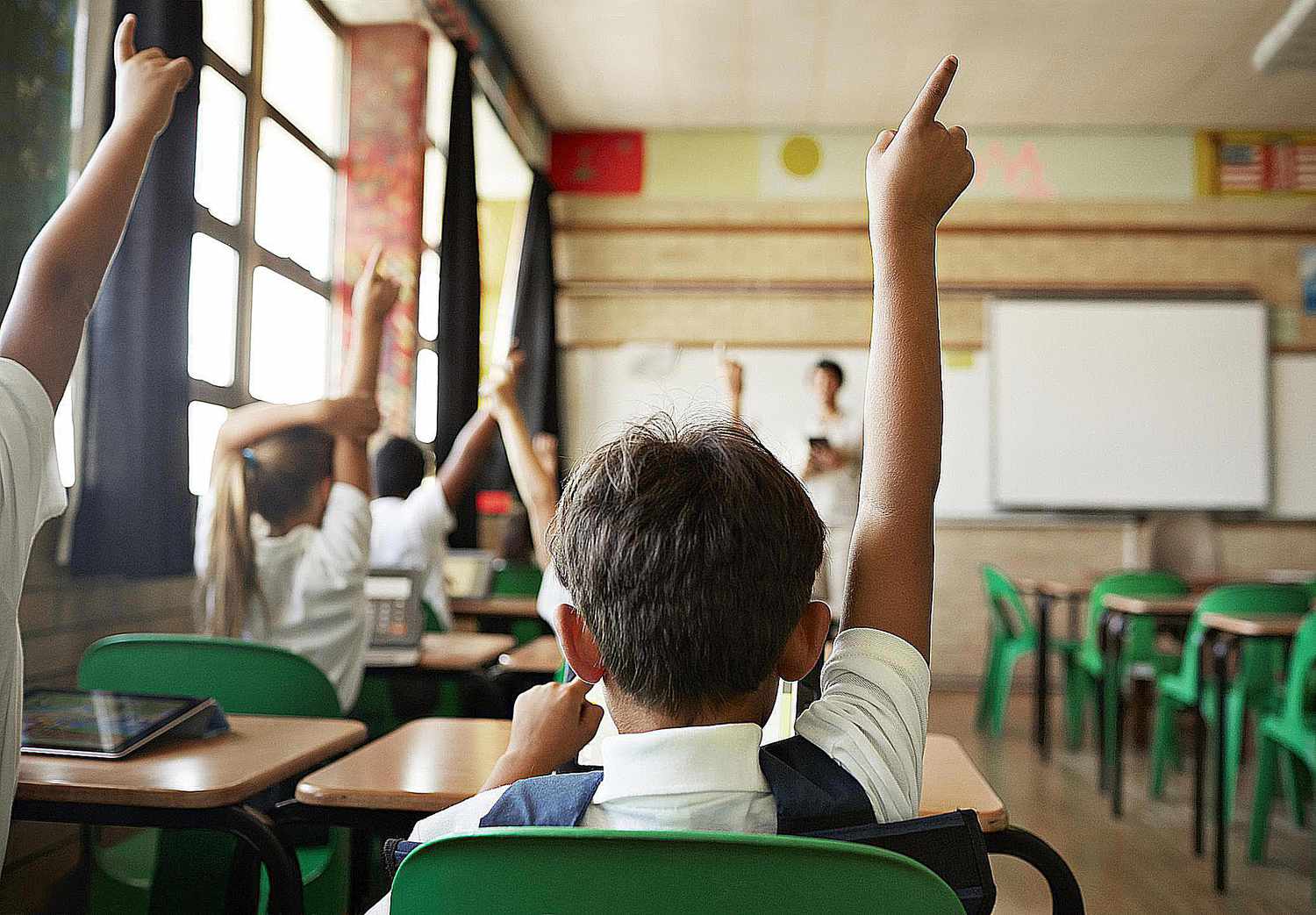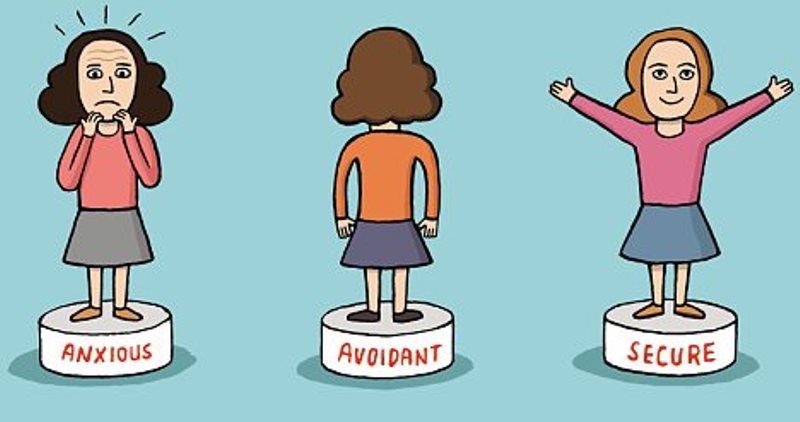How well did you or your student do on the Psychology A-Level May/June 2023? -PAPER 2 (Model Answers)
Paper 2 2023 June Model Answers
Sign Up For Exclusive A* Model Answers sent to you Weekly
Need to quickly recap paper 1 topics? Click here for our quick revision summaries.
Approaches in Psychology
Which of the following statements is correct according to the psychodynamic approach? ( 1 mark)
Shade one circle only.
A The ego is present at birth
B The ID is based on the morality principle
C The ID is part of the unconscious mind
D The superego mediates between the demands of the ID and ego
Model Answer
C The ID is part of the unconscious mind
Still a bit confused about the Psychodynamic approach? Check out our summaries and model answers here.
2.) State one assumption of the cognitive approach ( 1 mark)
Model Answer
One assumption of the cognitive approach is that psychology should focus on the study of internal mental processes such as memory, perception, attention, and problem-solving.
Check out ALL the model answers for the Cognitive Approach in Psychology here.
Steph and Georgie are both working mothers.
Steph enjoys being challenged at work. Steph's daughter listens to her mother's colleagues praising and admiring Steph's work and sees the awards she has been presented with in recognition of her effort. Steph's daughter is an enthusiastic student who is keen to be challenged at school.
Georgie hates her job. Her daughter has heard her boss shout at her down the phone for missing deadlines and sees how tired Georgie is after staying up late working. Georgie's daughter feels anxious when she is given difficult work and does not want to go to school.
3.) How might vicarious reinforcement explain the different attitudes of Steph's and Georgie's daughters to their schoolwork? (4 marks)
Model Answer
Steph's daughter observes her mother receiving praise, admiration, and awards at work, which serves as positive reinforcement. By witnessing the positive consequences of her mother's challenging work, Steph's daughter experiences vicarious reinforcement. This reinforcement strengthens her positive attitude towards being challenged and motivates her to seek out challenging tasks in her schoolwork. She associates challenges with recognition and success, leading to her enthusiastic and motivated approach to learning.
Georgie's daughter witnesses her mother's negative experiences at work, such as being shouted at and feeling tired due to work-related stress. These negative experiences serve as aversive reinforcement. As a result, Georgie's daughter experiences vicarious reinforcement of negative consequences associated with difficult work. This reinforcement creates anxiety and a negative emotional response towards challenging tasks. She learns to avoid difficult work and feels reluctant to engage with it. This attitude extends to her schoolwork, where she perceives challenging tasks as sources of anxiety and consequently develops a disinterest in school.
4.) Explain one strength and one limitation of using social learning theory to explain the different attitudes of Steph's and Georgie's daughters. ( 6 marks)
Model Answer
One strength of using social learning theory is that it has practical applications as it emphasises the importance of observational learning and the influence of having strong role models to ensure people can achieve their potential.
In this case, Steph's daughter observes her mother's positive experiences and achievements at work, which serves as a model for her own behavior. She learns through observation that being challenged leads to praise and recognition, motivating her to be enthusiastic and proactive in her schoolwork. This highlights the strength of social learning theory in explaining how individuals acquire attitudes and behaviors through observing and imitating others.
One limitation of using social learning theory in this context is that it primarily focuses on external factors and neglects internal cognitive processes. While observational learning and vicarious reinforcement are important aspects of social learning theory, they do not fully account for individual differences in how individuals interpret and internalise the observed behaviors and consequences. Factors such as cognitive appraisals, personal beliefs, and self-perceptions may also influence the attitudes and responses of Steph's and Georgie's daughters to their schoolwork. Therefore, social learning theory alone may not provide a comprehensive explanation for the differences in attitudes observed, as it does not fully address the cognitive aspects of learning and motivation.
Check out all the model answers for learning approaches here.
5.) In what ways might the biological approach explain the different attitudes of Steph's and Georgie's daughters to their schoolwork? (4 marks)
Model Answer
The biological approach suggests that genetic factors play a role in shaping individual differences, including attitudes and behaviors. It is possible that Steph's daughter has inherited genetic traits that contribute to her enthusiastic and motivated attitude towards schoolwork. These genetic factors may influence her cognitive processes, such as her ability to seek challenges and experience positive reinforcement. On the other hand, Georgie's daughter may have genetic predispositions that make her more susceptible to anxiety or stress-related responses, leading to her avoidance of difficult tasks and negative attitude towards school.
The biological approach also recognises the influence of neurochemicals on behavior and emotions. It is plausible that Steph's daughter may have a balance of neurochemicals that promote feelings of reward, motivation, and enthusiasm. This balance could be related to the release of neurotransmitters such as dopamine and serotonin, which are associated with positive emotions and motivation. In contrast, Georgie's daughter may experience an imbalance of neurochemicals that contribute to anxiety or low motivation, potentially affecting her response to challenging tasks in school.
6.) Outline and briefly discuss cognitive neuroscience ( 8 marks)
Model Answer
Cognitive neuroscience is a multidisciplinary field that combines principles and methodologies from cognitive psychology and neuroscience to study the relationship between the brain and cognitive processes. It aims to understand how the brain's neurological structures, mechanisms, processes, and chemistry contribute to mental processes such as perception, attention, memory, language, decision-making, and problem-solving. Cognitive neuroscience employs brain imaging techniques and investigates neurotypical individuals to locate the physical basis of cognitive processes.
Cognitive neuroscience provides a valuable framework for studying the neural underpinnings of cognition, offering significant contributions to our understanding of the brain's role in mental processes. By using advanced scanning techniques like fMRI, EEG, PET, and MEG, researchers can observe and analyse brain activity associated with specific cognitive tasks. This allows for the localisation of cognitive functions to specific brain regions and the identification of neural networks involved in complex cognitive processes.
However, there are certain limitations and considerations when discussing cognitive neuroscience. Firstly, the use of scanning techniques provides correlational evidence of brain activity and cognitive processes but does not establish causality. While brain imaging allows us to observe neural activations during specific tasks, it does not reveal the exact mechanisms and causal relationships underlying cognitive processes. Additionally, studying neurotypical individuals may not fully capture the complexity of cognitive processes in real-world contexts. Human cognition is influenced by various factors such as individual differences, developmental changes, and cultural influences, which may not be fully captured by laboratory-based experiments with neurotypical individuals.
Sign Up For Exclusive A* Model Answers sent to you Weekly
Biopsychology
7.) Outline the difference between endogenous pacemakers and exogenous zeitgebers.
Use examples in your answer. ( 2 marks)
Model Answer
Endogenous pacemakers refer to internal biological mechanisms that generate and maintain biological rhythms independently of external cues. These internal clocks are intrinsic to the body and govern the inherent timing and regularity of biological processes. One well-known endogenous pacemaker is the suprachiasmatic nucleus (SCN) in the hypothalamus, which serves as the master pacemaker for the sleep-wake cycle. The SCN generates a 24-hour rhythm that influences various physiological processes, including hormone release, body temperature, and sleep patterns.
In contrast, exogenous zeitgebers are external cues that help synchronise or entrain biological rhythms to the external environment. These cues act as time-givers, providing information to the body about the appropriate timing of biological processes. Light is a primary exogenous zeitgeber that has a significant impact on circadian rhythms. It acts on the photoreceptors in the retina, relaying information to the SCN, which then adjusts the timing of various physiological processes accordingly.
8.) Outline the fight or flight response and use this to explain what Xavier was experiencing. ( 6 marks)
Model Answer
Xavier experienced a vivid example of the fight or flight response, a physiological reaction triggered by a perceived threat or danger. In his case, as he fell off his bike into the road, he found himself in a potentially dangerous situation. This perception of threat activated his body's fight or flight response, causing a series of physiological and emotional changes.
As Xavier's brain registered the danger, his sympathetic nervous system swiftly kicked into action. This system is responsible for mobilising the body's resources in response to stress or threat. The activation of the sympathetic nervous system triggered the release of stress hormones, such as adrenaline and noradrenaline, into Xavier's bloodstream.
As a result, Xavier's heart began pounding rapidly, attempting to pump more blood to his muscles and vital organs. This increased heart rate provided him with an energy boost, preparing him to either confront the threat or flee from it. Simultaneously, Xavier's breathing rate escalated, allowing for more oxygen to enter his lungs and be delivered to his muscles, further supporting his physical readiness.
However, along with the heightened cardiovascular response, Xavier also experienced other physical sensations. His mouth became dry as the body redirected its resources away from non-essential functions like saliva production. Xavier felt sick due to the release of stress hormones, which can affect the gastrointestinal system. Additionally, his hands started shaking, a common manifestation of the fight or flight response, as the increased adrenaline levels affected his fine motor control.
In this highly aroused state, Xavier found it difficult to speak. The adrenaline surge prioritised physical readiness over verbal communication, leading to impaired vocal cord function. Furthermore, the heightened state of arousal can also impact cognitive function, making it challenging for Xavier to articulate his experience and thoughts.
After the initial threat had passed, Xavier gradually began to feel calm again. This shift can be attributed to the activation of the parasympathetic nervous system, which counteracts the sympathetic response. The parasympathetic system promotes relaxation and restoration of normal bodily functions, gradually diminishing the intense fight or flight response.
Xavier was not wearing a helmet. The teacher told him how lucky he was not to have suffered brain damage. She told him about a man who had been cycling without a helmet. He had fallen off his bicycle and now found it difficult to produce speech.
Xavier laughed and said, "I am young. If I had an accident, my brain would just recover on its own and get me back to normal."
9.) Discuss research into plasticity and functional recovery of the brain after trauma. Refer to the views of the teacher and Xavier in your answer. ( 16 marks)
Model Answer
Research into plasticity and functional recovery of the brain after trauma provides valuable insights into the brain's ability to adapt and regain function following injuries. The views expressed by the teacher and Xavier reflect different perspectives on this topic. Plasticity refers to the brain's capacity to reorganise and rewire itself in response to changes or damage. It plays a crucial role in the brain's ability to recover from trauma. Several aspects of plasticity contribute to functional recovery. For example, When a particular region of the brain is damaged, other areas can assume the functions of the injured region. This phenomenon, known as neural reorganisation or transfer of functions, allows the brain to compensate for the lost functions by redistributing tasks to other undamaged areas. As well as this, the brain retains the ability to form new connections between neurons. This process, called neural plasticity, enables the brain to establish alternative routes for communication and compensate for damaged pathways. Axon sprouting and dendritic arborisation are examples of this plasticity, facilitating the growth of new connections.
The teacher's concern about brain damage and the importance of wearing a helmet aligns with the understanding that traumatic brain injuries can have long-lasting consequences. The teacher's view reflects the potential severity of brain trauma and its potential impact on speech production and other cognitive functions.
On the other hand, Xavier's statement reflects a common belief among young individuals that their brains are resilient and capable of self-recovery. While it is true that younger individuals generally exhibit greater plasticity and potential for recovery, it does not guarantee automatic restoration to normal function in all cases.
The research conducted by Maguire et al. (2000) provides valuable insights into the plasticity and functional recovery of the brain. Their study focused on London taxi drivers and found that their posterior hippocampi were significantly larger compared to control participants. Additionally, the size of the hippocampus was positively correlated with the amount of time spent as a taxi driver. This research supports the notion of neural reorganisation and highlights the brain's ability to adapt in response to environmental demands.
The findings of Maguire et al. (2000) align with the concept of functional compensation by other undamaged areas in the brain. In the case of the taxi drivers, the larger posterior hippocampi can be seen as a result of the increased demands on spatial navigation and memory associated with their profession. The brain, in response to these demands, undergoes structural changes to accommodate and enhance the performance of specific functions. This supports the idea that the brain can adapt and reorganise its neural circuits to compensate for areas that may be damaged or underutilised.
Moreover, the research by Maguire et al. (2000) provides evidence for the formation of new connections between neurons, which is a fundamental aspect of neural plasticity. The larger hippocampi observed in the taxi drivers may reflect an increased number of synaptic connections and dendritic branching, allowing for enhanced information processing and memory functions. This study supports the notion that new connections can be formed in response to environmental demands and suggests that the brain has the capacity to adapt and rewire itself even in adulthood.
In light of the teacher's concern about brain damage and the importance of wearing a helmet, this research reinforces the significance of protective measures. While the brain demonstrates remarkable plasticity and the potential for functional recovery, it is essential to minimise the risk of traumatic brain injuries. Wearing a helmet can significantly reduce the severity and extent of potential damage, ensuring the optimal conditions for the brain's natural recovery processes to take place.
However, it is important to critically evaluate the generalisability of research findings to different contexts and populations. The study by Maguire et al. (2000) focused specifically on London taxi drivers, a unique group with specialised cognitive demands. Therefore, caution must be exercised in extrapolating these findings to other individuals or types of brain trauma. Furthermore, while the research suggests the brain's capacity for plasticity and recovery, the extent of recovery varies among individuals and depends on various factors, such as the nature and severity of the injury. Therefore, it is crucial to consider individual differences and tailor rehabilitation approaches accordingly.
Sign Up For Exclusive A* Model Answers sent to you Weekly
Research Methods
Answer all questions in this section.
A psychologist wanted to investigate whether exercise would affect stress levels in 15-year-olds. Previous research into the effects of exercise on stress in teenagers had shown that exercise decreased stress levels.
The psychologist decided to use a repeated measures design to investigate the effects of exercise on stress levels in 20 15-year-old students. All the students were approaching their end-of-year exams.
For Condition A, students were required to complete a 2 km run during their morning breaktime each school day for one week.
In Condition B, students continued their normal activities in the playground during their morning breaktime each school day for one week.
At the end of each week of the investigation, for both Condition A and Condition B. each. student was asked to rate their levels of stress on a rating scale of 1-10, where the higher the self-reported rating the greater the stress levels.
10.) Which of the following types of hypothesis is not appropriate for the psychologist to use in their study?
Shade one circle only
A Directional hypothesis
B Non-directional hypothesis
C Null hypothesis
D One-tailed hypothesis
Model Answer
B Non-directional hypothesis
11.) Explain why a repeated measures design was more appropriate than an independent groups design in this study. ( 2 marks)
A repeated measures design was more appropriate than an independent groups design in this study because using a repeated measures design allows for each participant to serve as their own control. In other words, each student's stress levels were compared under two different conditions: Condition A (exercise) and Condition B (normal activities). By comparing the stress levels within the same individuals, the effects of individual differences are minimised, and the focus can be placed on the specific impact of the conditions themselves.
To improve the validity of the findings, the psychologist counterbalanced the students across the experimental conditions.
12.) Describe how the psychologist could have counterbalanced the students across the experimental conditions. ( 3 marks)
Model Answer
First, the psychologist would divide the 20 students into two groups, let's call them Group 1 and Group 2.
In the first week, Group 1 would be assigned to Condition A, which means they would do the 2 km run during their morning breaktime. At the same time, Group 2 would be assigned to Condition B, which means they would continue their normal activities in the playground.
Then, in the second week, the psychologist would switch the groups. Group 1 would now be in Condition B, doing their regular activities in the playground, while Group 2 would be in Condition A, doing the 2 km run during their morning breaktime.
This way, each student would get a chance to experience both conditions, but in different weeks and with a different group of students. This ensures that any effects seen in the study are not just because of the order in which the conditions were presented or because of the specific group of students.
Students self-reported their stress levels on a scale of 1-10.
13.) Explain how this might have affected the validity of the data collected, ( 4 marks)
Model Answer
Self-report measures rely on individuals' subjective interpretations and perceptions of their stress levels. Different students may have varying understandings and interpretations of stress, leading to potential differences in how they rate and report their stress levels. This subjectivity introduces a degree of measurement error and may affect the reliability and validity of the collected data.
As well as this, students may feel inclined to provide responses that they believe align with societal expectations or what they perceive as the "correct" response. For example, some students may feel pressure to downplay or minimise their stress levels due to societal expectations of being resilient or "strong." On the other hand, some students may exaggerate their stress levels to seek attention or support. Social desirability bias can distort the accuracy of self-reported stress levels and affect the validity of the data.
14.) Explain one strength and one limitation of collecting quantitative data in this study. ( 4 marks)
Model Answer
One strength of collecting quantitative data in this study is the ability to obtain precise and numerical measurements of stress levels using a rating scale from 1 to 10. This numeric data provides precise measurements of stress levels and allows for easy comparison and analysis. It enables the researcher to quantify the extent of stress experienced by the participants and detect potential patterns or differences between the two conditions. The use of numbers also facilitates statistical analyses, such as calculating means, standard deviations, and conducting inferential tests, to draw conclusions and make generalisations about the effects of exercise on stress levels in 15-year-olds.
While quantitative data provides numerical measurements, it may lack depth and insight into the subjective experiences and nuances of stress. By relying solely on a rating scale, the study may not capture the rich and contextual information associated with stress levels. Factors such as the specific stressors experienced, the emotional or cognitive aspects of stress, or individual variations in response may not be adequately captured by a single numeric rating. This limitation restricts the researcher's understanding of the complexity and individual differences in stress experiences among the participants.
The psychologist calculated the median and range of stress ratings after each condition. The data is presented in Table 1.
Table 1 Median and range of stress ratings reported in each experimental condition.

15.) What do the median and range values presented in Table 1 suggest about students' stress ratings after each condition? Justify your answer. ( 4 marks)
Model Answer
For condition A, The median stress level of 5 suggests that half of the students who participated in the 2km break time run reported stress levels at or below this value. The median represents the middle value in the distribution of stress ratings, indicating that approximately half of the students experienced stress levels lower than 5 and the other half experienced higher levels of stress.
The range of 6 indicates the spread or variability in the stress ratings for Condition A. The highest stress rating recorded was 6 points higher than the lowest stress rating. This wide range suggests that there was significant variation among the students in terms of their reported stress levels after engaging in the 2km run during break time.
For condition B, The median stress level of 6.5 indicates that half of the students who continued with their normal break time activities reported stress levels at or below this value. This median value is higher compared to Condition A, suggesting that, on average, students experienced slightly higher stress levels after engaging in their regular break time activities.
The range of 3 suggests a narrower spread of stress ratings for Condition B. The highest stress rating recorded was only 3 points higher than the lowest stress rating, indicating a relatively smaller variation in the stress levels reported by the students after participating in their normal break time activities.
16.) Explain one limitation of using the range to represent the spread of stress ratings. ( 4 marks)
Model Answer
One limitation of using the range to represent the spread of stress ratings is that it only looks at the highest and lowest values without considering the other numbers in between.
For example, if you have another set of stress ratings: 5, 6, 7, 8, and 9, the range would still be 10 minus 2, which is 8. But in this case, the stress ratings are much closer to each other, indicating less variability or spread compared to the first set.
So, the range can sometimes give an incomplete picture of how the stress ratings are spread out. It doesn't consider the specific values in between the highest and lowest, and it doesn't tell you if the ratings are clustered together or spread out evenly.
To get a better understanding of the spread, it's helpful to use other measures like the standard deviation which takes into account all the numbers and how they are distributed. These measures provide a more accurate picture of how the stress ratings are spread and can give you a better understanding of the overall pattern.
A Wilcoxon test was used to determine whether differences in stress ratings were significant. The psychologist used a 0.01 level of significance.
17.) Explain what is would mean if the results in the above study were significant at the 0.01 level. ( 2 marks)
Model Answer
If the results in the above study were found to be significant at the 0.01 level, it would mean that the differences in stress ratings between the two conditions (2km break time run and normal break time activities) were unlikely to occur by chance. The 0.01 level of significance indicates a very stringent criterion for determining statistical significance, suggesting a high level of confidence in the observed differences. if the results were significant at the 0.01 level, it would provide strong evidence to support the hypothesis that exercise (2km break time run) has a significant impact on reducing stress levels compared to engaging in normal break time activities. The findings would suggest that the 2km run had a consistent and substantial effect on lowering stress levels among the 15-year-old students.
The psychologist found the difference was not significant at the 0.01 level.
The psychologist was concerned that there might have been a type 2 error.
18.) Explain what is meant by a type II error in the context of this study. ( 2 marks)
Model Answer
In the context of this study, a type II error refers to a situation where the psychologist fails to reject the null hypothesis, despite there being a true difference or effect present in the population. It means that the study concludes that there is no significant difference in stress levels between the two conditions (2km run vs. normal break time activities), even though there might be an actual difference in stress levels caused by exercise.
In other words, a type II error occurs when the study fails to detect a real effect or relationship that exists. In this case, the psychologist was concerned that they may have incorrectly concluded that exercise does not affect stress levels in 15-year-olds when, in fact, there might be a true effect present.
19.) Suggest one way the psychologist could reduce the chance of type II error. ( 1 mark)
Model Answer
To reduce the chance of a type II error, the psychologist could consider lowering the significance level used in the statistical analysis. Currently, the psychologist is using a significance level of 0.01 (or 1%). By decreasing the significance level to a smaller value, such as 0.05 (or 5%), the researcher would require stronger evidence to reject the null hypothesis and declare a significant difference between the conditions.
Your psychology teacher has read about the beneficial effects of exercise.
She asks you to design a study to see if there is a correlation between time spent swimming and anxiety levels in A-level psychology students.
You need to select a sample of 20 participants using random or stratified sampling.
20.) Explain how a sample of 20 participants could be selected for your study using either random or stratified sampling.
Outline one strength of the sampling method you have selected. (4 marks)t
Model Answer
To select a sample of 20 participants for the study on the correlation between time spent swimming and anxiety levels in A-level psychology students, we can use either random sampling. I could obtain a list of all A-level psychology students in the target population then assign a unique identifier to each student. I would then use a random number generator or a randomisation method to select 20 participants from the list of identifiers.
One strength of random sampling is that it provides a representative sample of the population. Since every member of the population has an equal chance of being selected, the sample is likely to reflect the characteristics and diversity of the larger population. This enhances the generalisability of the study's findings, allowing for broader conclusions to be drawn about the correlation between swimming time and anxiety levels in A-level psychology students.
Your teacher tells you not to use self-report to measure anxiety levels and tells you to use a different way of measuring anxiety.
21.) Suggest how you could measure the co-variables, time spent swimming and anxiety levels, for your study.
Model Answer
Co-variable 1= Provide participants with wearable fitness trackers or waterproof watches that have the capability to track swimming duration. Instruct participants to wear the devices while swimming and record the time spent swimming accurately. Collect the recorded data from the devices after the swimming sessions. Use the collected data to determine the total time each participant spent swimming during the specified period. By using objective measures like fitness trackers or watches, you can obtain more accurate and reliable data on the time spent swimming, eliminating potential biases or inaccuracies that may arise from self-reporting.
Co-variable 2= Use physiological measures such as heart rate variability (HRV) or skin conductance response (SCR). Attach heart rate monitors or sensors that measure skin conductance to participants. During the study sessions, collect data on participants' HRV or SCR while they are engaged in various anxiety-inducing tasks or scenarios (e.g., public speaking, solving challenging puzzles). Analyse the physiological data to assess the level of arousal and activation, which can be indicative of anxiety levels. Use standardised scoring algorithms or established norms to interpret the physiological data and quantify anxiety levels for each participant.
22.) Suggest an appropriate statistical test that could be used to analyse the data in your study and explain two reasons for your choice in the context of your study, ( 5 marks)
Model Answer
An appropriate statistical test that could be used to analyse the data in the study on the correlation between time spent swimming and anxiety levels, using the provided measurement methods (wearable fitness trackers/watches for time spent swimming and physiological measures for anxiety levels), is the Pearson R correlation coefficient test.
The Pearson correlation coefficient is suitable for analysing the relationship between two continuous variables. In this study, time spent swimming can be measured as a continuous variable using the data collected from wearable fitness trackers or waterproof watches. Similarly, physiological measures such as heart rate variability or skin conductance response can provide continuous numerical values representing anxiety levels. The Pearson correlation coefficient allows us to examine the linear relationship between these two continuous variables.
The Pearson correlation coefficient assumes that the data is normally distributed and that there is a linear relationship between the variables. Since the data collected from wearable fitness trackers and physiological measures are numerical and continuous, it is reasonable to assume that these variables might follow a normal distribution. Additionally, a linear relationship between time spent swimming and anxiety levels is plausible, as more time spent swimming may potentially result in decreased anxiety levels. By choosing the Pearson correlation coefficient, we can evaluate the strength and direction of this linear relationship.
Using the Pearson correlation coefficient, we can calculate the correlation coefficient, which will provide information about the strength and direction of the relationship between time spent swimming and anxiety levels. The coefficient ranges from -1 to +1, where a positive value indicates a positive relationship, a negative value indicates a negative relationship, and the magnitude of the coefficient represents the strength of the relationship. By analysing the data with this statistical test, we can gain insights into the correlation between time spent swimming and anxiety levels, contributing to a better understanding of the relationship between exercise and mental health in A-level psychology students.
23.) Briefly explain one reason why research should be peer reviewed. ( 2 marks)
Model Answer
One reason why research should be peer-reviewed is to ensure the quality and credibility of the findings. Peer review involves subjecting research papers to a rigorous evaluation by experts in the same field who assess the methodology, data analysis, interpretation of results, and overall scientific rigor of the study. This process helps to identify any potential flaws, biases, or errors in the research, as well as to ensure that the study adheres to ethical standards. Peer review acts as a quality control mechanism, providing an objective and critical assessment of the research, which enhances the reliability and validity of the findings before they are published or disseminated to the scientific community and the public.
24.) Identify two ethical issues in the design and conduct of psychological research. In each case, explain how the issue you have identified could be dealt with ( 6 marks)
Model Answer
Obtaining informed consent from participants is crucial to ensure respect for their autonomy and protect their rights. One ethical issue that may arise is the potential for participants to provide consent under coercion or without fully understanding the nature and risks of the study.
Researchers can address this issue by providing clear and comprehensive information about the study to participants before obtaining their consent. This includes explaining the purpose, procedures, potential risks and benefits, confidentiality measures, and the voluntary nature of participation. Participants should have the opportunity to ask questions and clarify any concerns. Researchers should also ensure that consent is obtained freely and without any form of coercion or undue influence.
Privacy Maintaining confidentiality and privacy is essential in psychological research to protect the rights and well-being of participants. An ethical issue can arise when there is a risk of breaching confidentiality, such as unintentional disclosure of sensitive information, inadequate data protection measures, or potential identification of participants through data linkage.
Researchers can address this issue by implementing strict confidentiality protocols. This includes using anonymised or coded data to ensure participant identities are protected. Data should be securely stored and only accessed by authorised personnel. Researchers should also inform participants about the measures taken to maintain confidentiality and assure them that their data will be treated with the utmost care. In cases where data is shared with other researchers or for publication, identifiers should be removed, and precautions should be taken to prevent re-identification.
Sign Up For Exclusive A* Model Answers sent to you Weekly
Check out the paper 1 May/June 2023 AQA A-level Psychology model answers here
Studying for Issues and Debates (Gender + Culture)? Check out these model answers of all the questions that have been asked on this area.
Take a look at the rest of the Issues and debates model answers for paper 3 here.
Studying the Relationships unit? Check out these model answers here.
Studying the Schizophrenia unit? Check out these model answers here.













